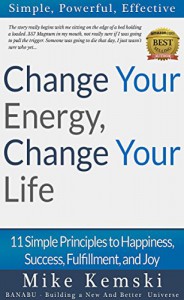John Hogue has always been something of an iconoclast, and in Everything You Always Wanted to Know About 666 but Were Afraid to Ask, the icon he blasts is the very Number of the Beast as noted in the biblical Book of Revelation—666 (or 616 depending upon the calculation of Greek letters-to-numbers pulled from which ancient manuscript).
Actually, Mr. Hogue is not blasting the “Number of the Beast” idea itself, but rather the fearful superstition assigned to that number from shoddy interpretations of St. John’s writing. In this little book, he tells us to “lighten up” about this number. It’s just a number. We take it way too seriously out of our religious biases and unfounded beliefs. He likens it to the hypocritical stigma attached to public talk of sex, prior to David Reuben’s pivotal book put out in the rebellious 1960’s, Everything You Always Wanted to Know About Sex But Were Afraid to Ask (hence, this book’s title).
Mr. Reuben’s book pointed out the obvious hypocrisies of our attitudes about sex, and Mr. Hogue takes a similar tack by showing that “666” is an association with evil that is made more from superstition than scholarly research. He says:
It isn’t the number that makes one afraid; it is the projection of fear programmed in an indoctrinated mind.
And he goes on to quote Revelation chapter 13 verse 18:
Here is the key; and anyone who has intelligence may work out the number of the beast. The number represents a man’s name, and the numerical value of its letters is 666. (or 616, if you rely on earlier surviving editions of this passage.)
Indeed, if you check the New Oxford Annotated Bible Revised Standard Version commentary on page 1505 (1973 edition), you’ll find a note on this verse that says:
Of countless explanations, the most probable is Neron Caesar (in Hebrew letters), which, if spelled without the final n, also accounts for the variant reading, 616.
Interestingly, the other versions of the Bible I checked (1972 Thomas Nelson edition of the King James version, and the 1976 Broadman Press edition of The Good News Bible) didn’t make that point. That may say something about belief vs scholarship.
Mr. Hogue makes his point that 666 could just as easily have been translated 616. But it wasn’t, at least in popular Bibles, and so “the Word of God” says the number is 666.
Now there are implications of the Number being 616 that Mr. Hogue goes into and supports with other passages from Revelation. I had actually made note of these implications myself in my youthful days of faith, but chose to ignore them. I see that dynamic in effect all around me every day and I think this book is Mr. Hogue’s attempt to shine a light on it.
In shining that light, Mr. Hogue makes an assertion as to what the book of Revelation is NOT about (around location 149 in the ebook), and that, I think, is the profound message of this book.
Mr. Hogue quotes Nietzsche, in full, on the “God is dead” idea. I’m not sure I agree with what Nietzsche is saying here (or anywhere else) but Mr. Hogues offers an interesting commentary on it that he punctuates with quotes from Osho (whom I find more agreeable). This is the weighter side of this book that balances the lighter parts.
And it is with a lighter part that Mr. Hogue ends his book. In his trademark lightness of being for a serious subject, he gives us a version of The Twelve Days of Christmas that is filtered through the traditional interpretation of the Book of Revelation. It’s clever and funny, and (if you can keep an open mind) enlightening.
Everything You Always Wanted to Know about 666 but were Afraid to Ask is fun and educational. You can learn about the origins of 666, why it’s considered an “evil” number, and why you might want to reconsider that viewpoint. Mr. Hogue is well educated in considering and reconsidering such subjects, and provides a good pivot point for the seeker who is looking for the reality behind such cultural icons. A book like this, that is fun-loving even as it provides introspection of a serious subject, can help those so-seeking.
Give it a try.

 1
1





















